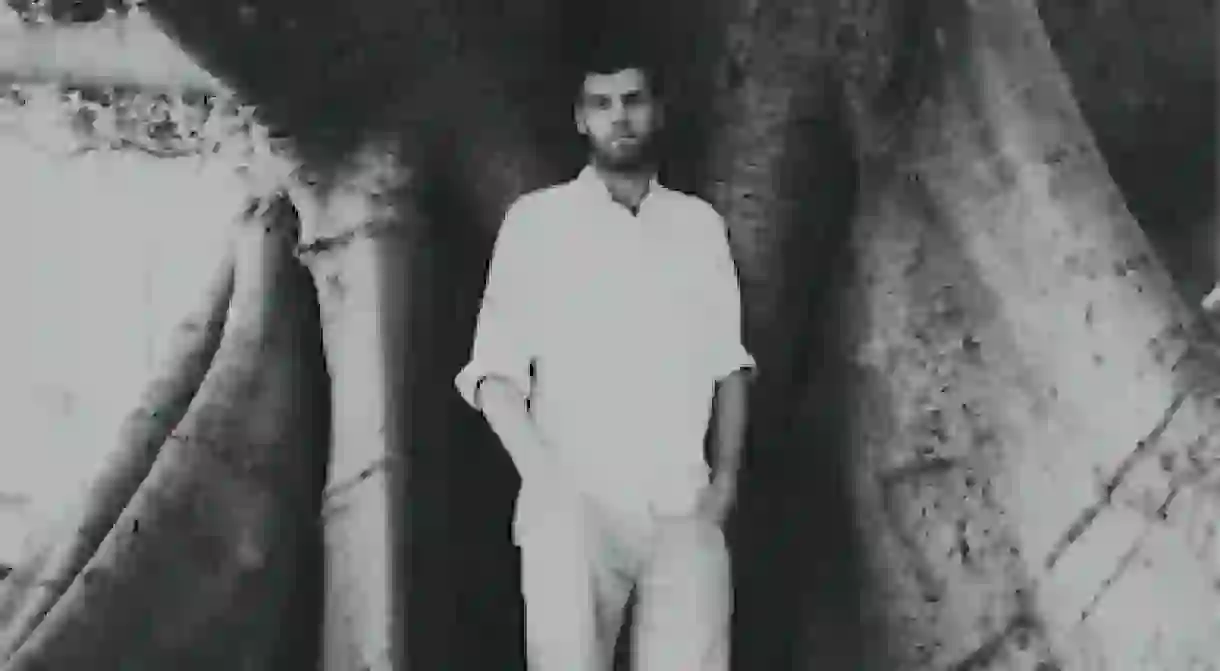Blanco White Reveals How Spain and Bolivia Shaped His Music

In January I was lucky to visit Cadiz in southern Spain with portrait photographer Sequoia Ziff. I’d been a fan of her work for a long time, and it was exciting to collaborate with her in search of images to accompany the music from my latest EP, ‘Colder Heavens’. Cadiz is a special city for me. I lived there for nine months back in 2012–13, and it was there that the influences and ideas behind Blanco White really began.
I had chosen to head south to Andalusia for its guitar tradition, having always loved the sound of nylon strings associated with the Spanish style of playing. I’d heard plenty of classical guitar growing up, but knew next to nothing about flamenco, which ended up being a huge musical discovery for me. It was unforgettable watching it live for the first time, performed by a singer and guitarist in a small bar on the seafront. The rhythms on the guitar were unlike anything I’d heard before, and the drama in the vocals was captivating.
A friend, Felipe, later introduced me to my guitar teacher in Cadiz, Nono García, a master of the instrument, and also a respected composer and recording artist. It was incredibly special to study under him, and he helped me to begin developing my own style of playing, experimenting with basic elements from flamenco and classical styles.

Beyond the music, there was also a beauty to Cadiz as a city that I was instantly drawn to, captured in Sequoia’s photographs. Nearly totally surrounded by the sea, it feels like an island. It’s ancient too, with a claim to being Europe’s oldest city and so the buildings and maze-like streets are brimming with history. I lived on a narrow lane called ‘Callejón de los Piratas’ which translates as pirate alley – apparently something to do with Francis Drake’s attack on Cadiz before the Spanish Armada. Receiving post addressed to ‘pirate alley’ always made me smile!

Jutting out into the Atlantic, it definitely felt like the city had an aura of myth and magic to it, and that element of fantasy is something I have always wanted to convey in the atmosphere and lyrics of the music. Going back there with Sequoia was a great opportunity to try and capture some of the architecture’s dreamlike beauty, and it was fascinating to explore Cadiz through her eyes as a photographer.

The other side to Blanco White as a musical project is rooted in Latin America, and specifically traditional Andean ‘música folklórica’. After my time in Cadiz I travelled to Bolivia for four months to study the charango, a small 10-stringed instrument originally from Potosí in the south of the country. In neighbouring Sucre I found a brilliant teacher Carlos, who taught at a local music school. He instructed me in a number of traditional rhythms and helped me to explore some of the different styles of playing.

The charango is a remarkable instrument with a distinctly haunting sound and I’ve always found the tuning leans towards minor-sounding chords, giving it an emotive and peculiarly mournful character. As with flamenco in Spain, I was quickly bewitched by the Andean sound. I can think of no other musical genre that captures the landscapes in which it comes from in quite the same way.

My time in both Cadiz and Sucre hugely informed the music I started to write and gave me more of a vision for what I wanted to achieve sonically; namely a fusion of these influences from either side of the Atlantic, combined with the musical influences I had grown up with back home. As places they also remain inspiring to me, and it was wonderful to see Sequoia captivated by Cadiz in the same way that I had been.













